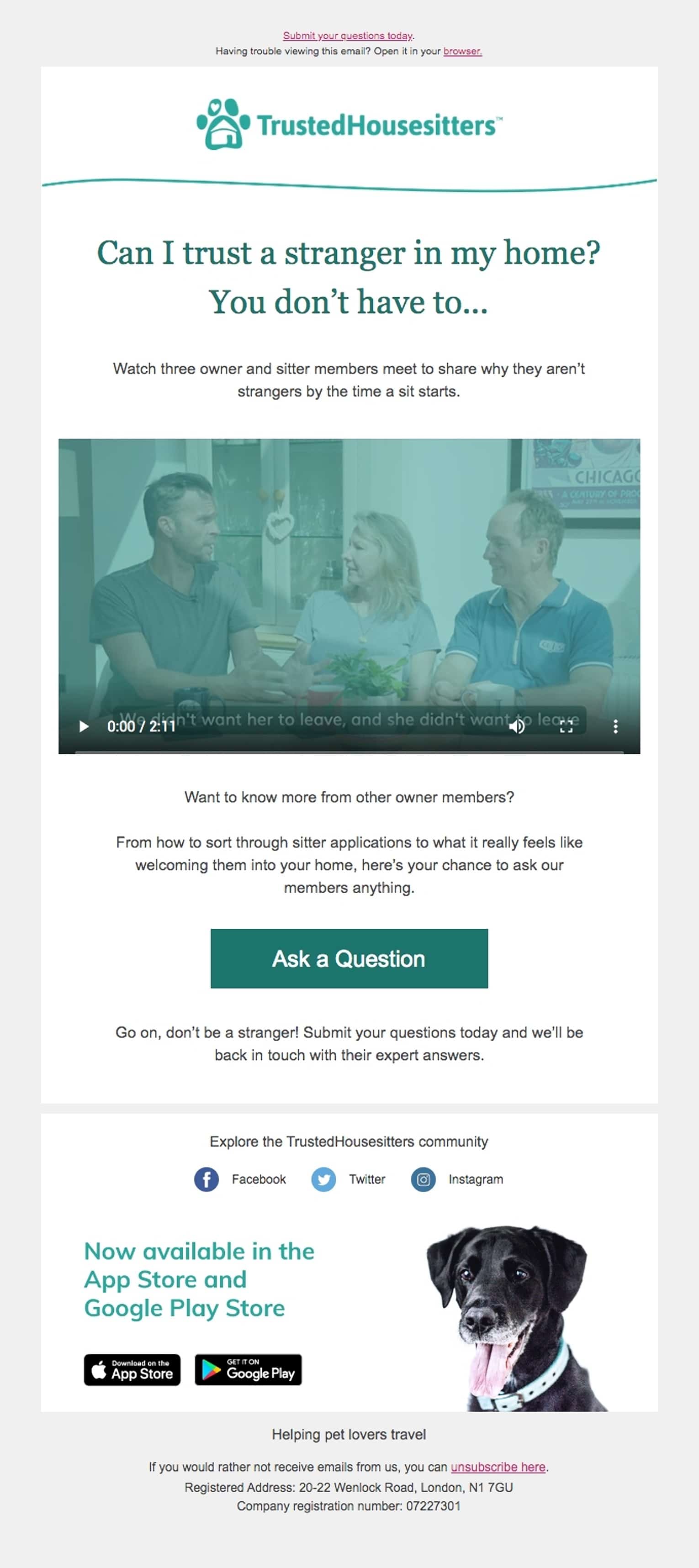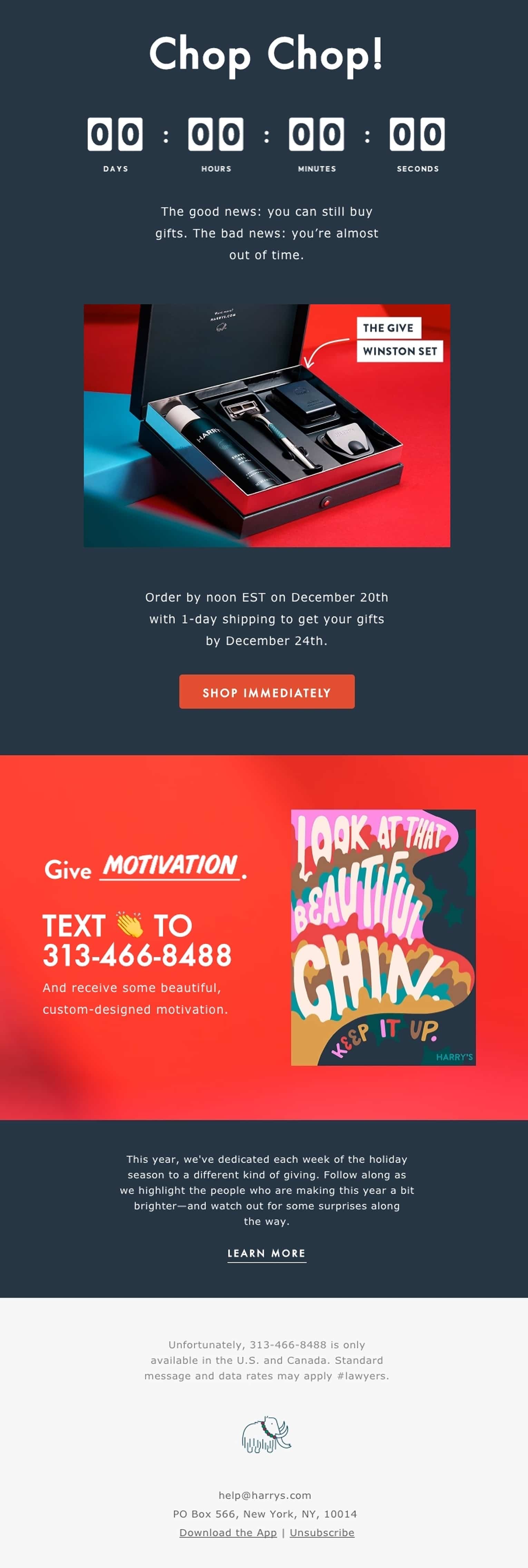Have you ever crafted what you thought was perfect marketing email, only to be disappointed when it didn’t perform well?
It can be frustrating to troubleshoot your process and figure out where you went wrong.
Let’s say you’re already working with an appropriately segmented and healthy distribution list. You even have automated customer journeys and other workflows set up to keep your subscribers engaged. You make sure that you’re including all the essential parts of an email in every campaign component.
What else could you improve upon? You might consider using emotional triggers.
Read on to learn about emotional triggers. We’ll discuss what they are, what types of email campaigns would benefit from them, and how to include them in your email marketing efforts.
What are emotional triggers in email?
Emotional triggers are exactly what they sound like. Most people have emotion-based responses to certain opinions and intentional actions of others. These responses make people sensitive, stressed, and sometimes unable to act logically. In marketing, emotional triggers tug at customers’ heartstrings to affect buying decisions.
Here are some positive emotional triggers that are fairly easy to bake into your campaigns:
- Anticipation or excitement: author Gretchen Rubin asserts that anticipation is the first of four stages of happiness. When customers look forward to something, they feel good about it and may even share their anticipation with other people.
- Belonging or connection: the need to belong or be part of something bigger is human nature. This feeling is a great motivator. Customers may purchase items or participate in events to strengthen connections to specific groups. Through this trigger, brands can create tight-knit communities that support and trust them.
- Curiosity: curiosity inspires physical action and mental activity in customers. Brands may trigger curiosity through sensationalism. However, unsubstantiated claims could damage their reputation in the long run. Appealing to customers’ thirst for knowledge is a more stable strategy.
- Fear of missing out (FOMO): this is a milder type of fear. The concern here has less to do with mortality and more to do with losing the chance to be in on an exclusive offering.
- Hope: this trigger deals with creating a yearning or expectation for a wholesome or beneficial outcome. The other side of this positive trigger is guilt. It takes skilled writing to walk the fine line between hope and guilt, especially when nonprofits use these particular triggers.
The idea is to craft emails that target specific emotional triggers. Emotional marketing depends on knowing how your words and visuals will affect human behavior.
How do you include emotional triggers in email campaigns?
As with any marketing campaign, you need to determine its purpose. You can’t decide on which emotion to provoke without knowing the end goal of your marketing email.
Now comes the tricky part. You need to hone your emotional marketing skills well enough for your subscribers to forget about your bottom line. Practice this by highlighting the helpfulness of your content.
Here are four must-haves of every email employing emotional marketing:
- Personalization: even without emotional triggers, personalization is crucial. Did you know that personalized emails have 600% higher click-through rates? Emotions are below the surface level for most people. Personalization cuts through that first barrier and makes it feel like you’re conversing with your customers.
- A problem: think of a marketing email’s purpose as a concrete problem that needs solving. Get to know your subscribers and consider their issues and difficulties. Being helpful is all about recognizing and taking the pressure off customers’ pain points.
- An emotional trigger: follow up an understanding of a problem with the part that provokes subscribers’ emotions. Train yourself to do this by putting yourself in your customers’ shoes and thinking of what kind of language or tactics would work on you. If you start feeling the emotion during the course of your email crafting, you’re on the right track.
- A solution: never bring up a problem you can’t solve. Swiftly put together a helpful solution to let subscribers know that you care.
- A call to action (CTA): with enough skill, the strength of your CTA should help your customers and your metrics. You should aim for an increase in both click-through rates and conversion rates.
If you want to raise the chances of subscribers clicking on your CTA, you can repeat them once or twice throughout your email body.
Here are 5 examples of creative ways to implement emotional triggers in email marketing.
Examples paint a clearer picture of how emotional marketing works. Study the emails below to get a grasp of how you can embed emotional triggers in campaigns.
1. Build excitement by offering the option to pre-order an anticipated product.
If you’re working with a retail brand, you already know the importance of hype. When a product is popular and desirable but not yet available, you can send out promotional emails provoking excitement.
Make your subscribers feel special and lucky to be part of your email list. Give them the first look at a new product if possible. It’s a great way to engage subscribers and keep them loyal to your brand.
Source: Really Good Emails
The Oculus email above offers the option to pre-order both the Oculus Quest and the Oculus Rift S, using separate CTAs. While the focus is to rack up pre-orders, most of the email is anticipating what you need after big-ticket items: upcoming games, VR experiences, etc.
2. Strengthen connections by celebrating a milestone with your customers.
You may already have an email campaign with a successful emotional trigger running in the background: a birthday email. Most marketers give subscribers the option to provide this information, along with their name, gender, and location. These details make it much easier to personalize email marketing campaigns.
As previously noted, personalization gets your foot in the door. Celebrating milestones together is the stuff of relationship-building. Nothing feeds that sense of belonging like having shared special occasions.
Source: Really Good Emails
The email above shows theSkimm celebrating a brand milestone with its customers. Dynamic content reminds customers of the brand’s presence in their lives for the past five years. The referral program mixed with a raffle rewards loyal subscribers and accomplishes significant lead generation.
3. Pique curiosity by leading with an interesting question.
Did you know that the typical adult has an attention span of approximately eight seconds? Longer than that, and a task might remain undone—even something as simple as reading an email.
If you notice that a majority of your subscribers have a short attention span, you can design more scannable emails. You may also attempt to trigger their curiosity.
Source: Really Good Emails
The TrustedHousesitters email above asks: “Can I trust a stranger in my home?” While not the most clever, it’s relatable and connected to the brand’s identity.
The curiosity gap is easily crossed once you open the email. Their CTA even encourages further curiosity by telling you to “Ask a Question.”
4. Cultivate FOMO by adding a countdown timer.
The idea of adding a countdown timer to an email used to be so novel. Modern technology has made it much easier to do in recent years, and it’s changed the game when it comes to creating a sense of urgency in your email.
Numbers slowly decreasing can impact decision-making in surprising ways. Emails with countdown timers average at least 14% higher conversion rates, as well as 59% higher transaction rates.
Source: Really Good Emails
The Harry’s email above has a trifecta of FOMO-inducing elements: the “Chop! Chop!” heading, the CTA button with the text “Shop immediately,” and the countdown timer.
5. Tell an uplifting story to trigger hope and encourage donations.
Telling stories is one of the most common tools email marketers use in crafting campaigns, and for good reason. It’s one of the most ancient ways human beings have passed on and preserved messages and historical accounts from one generation to the next.
Why are stories so effective? Ninety-five percent of cognition occurs not in the conscious brain, but in the subconscious. When you tell a story, you activate parts of the mind associated with emotions, movement, sight, sound, and taste. This observation carries even more meaning when we say that giving is an emotional act.
Source: Really Good Emails
The Help for Heroes email above leads with a story and ends with a donation request. The language used to tell the story is crucial: thoughtful, hopeful, and powerful. It elicits a real emotional response.
Ideally, the act of giving should bring positivity to the donors as much as it does to those receiving the donations.
Wrap up
Everyone has similar emotional triggers. To understand and influence your subscribers, you need to hone your emotional marketing skills. Some common triggers you can use are anticipation, belonging, curiosity, fear of missing out, and hope.
Here are 5 ways to include these emotional triggers in email marketing:
- Build excitement by offering the option to pre-order an anticipated product.
- Strengthen connections by celebrating a milestone with your customers.
- Pique curiosity by leading with an interesting question.
- Cultivate FOMO by adding a countdown timer.
- Tell an uplifting story to trigger hope and encourage donations.
Raring to use emotional triggers in marketing campaigns? Increase the quality of your work and boost your ROI by using email personalization hacks.










